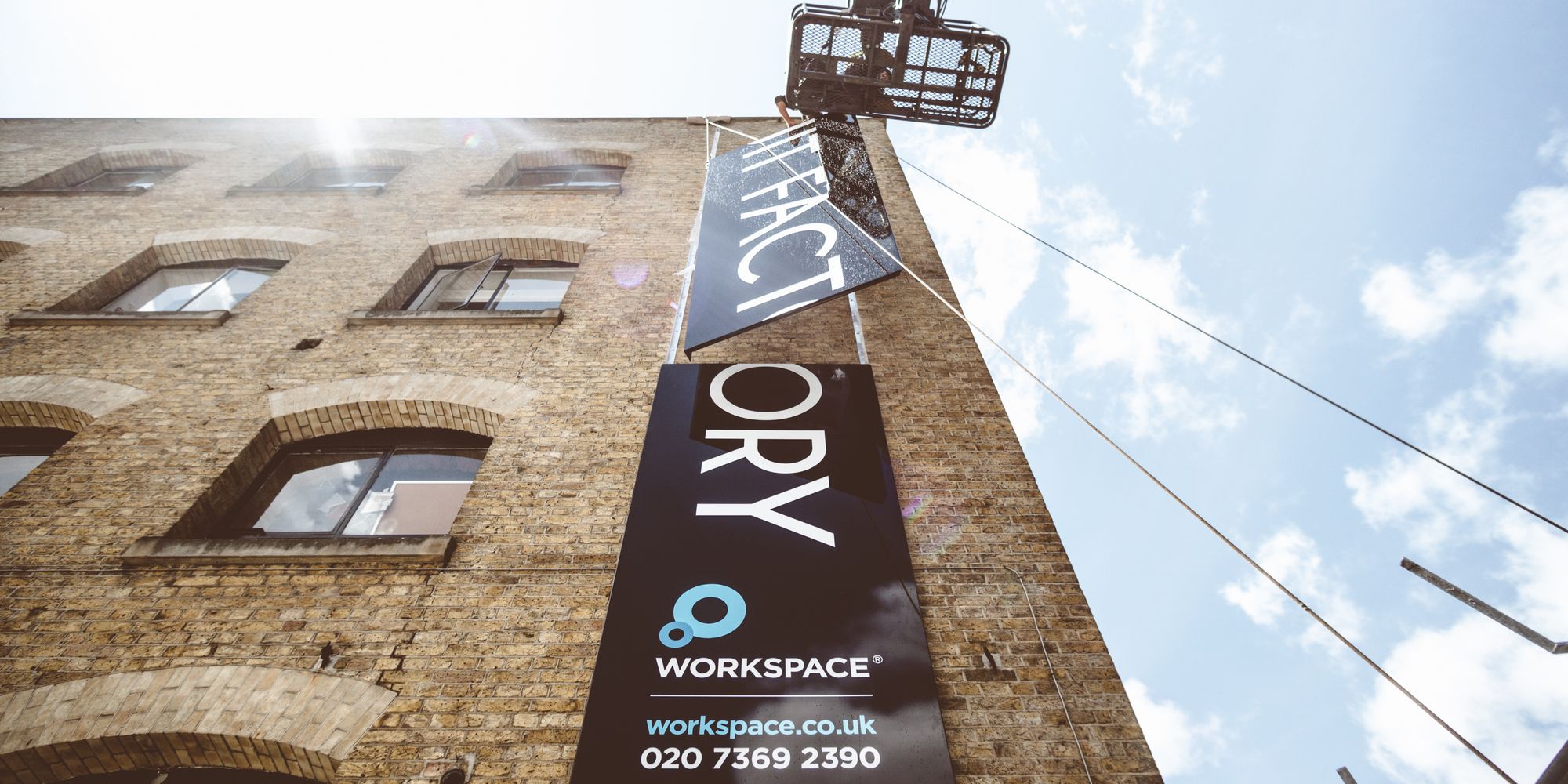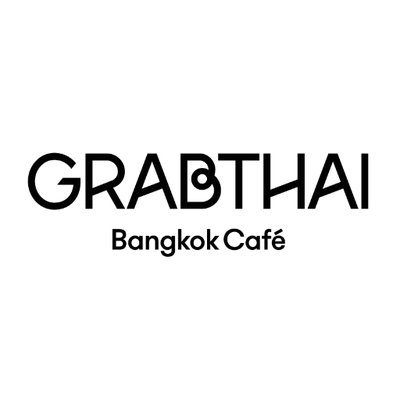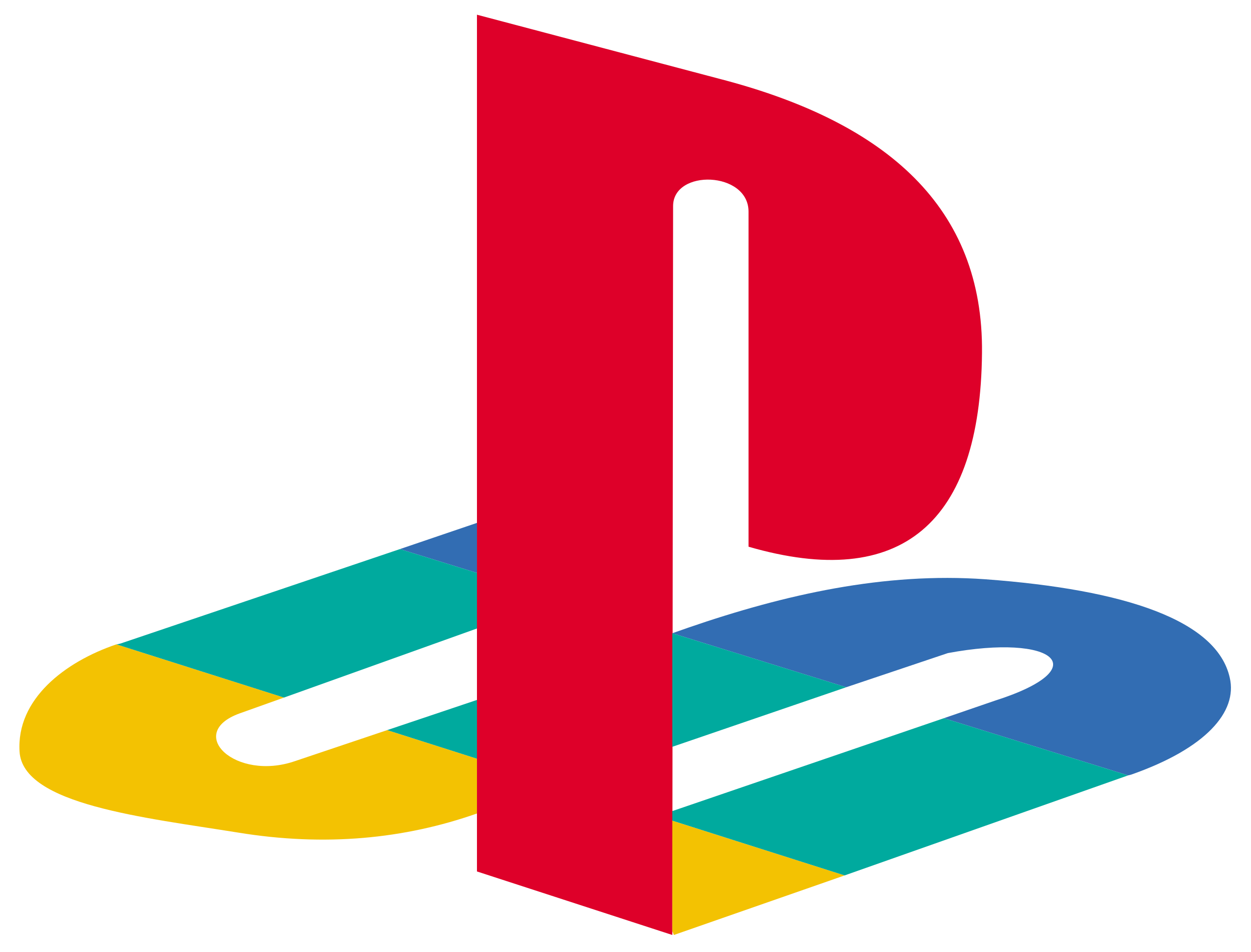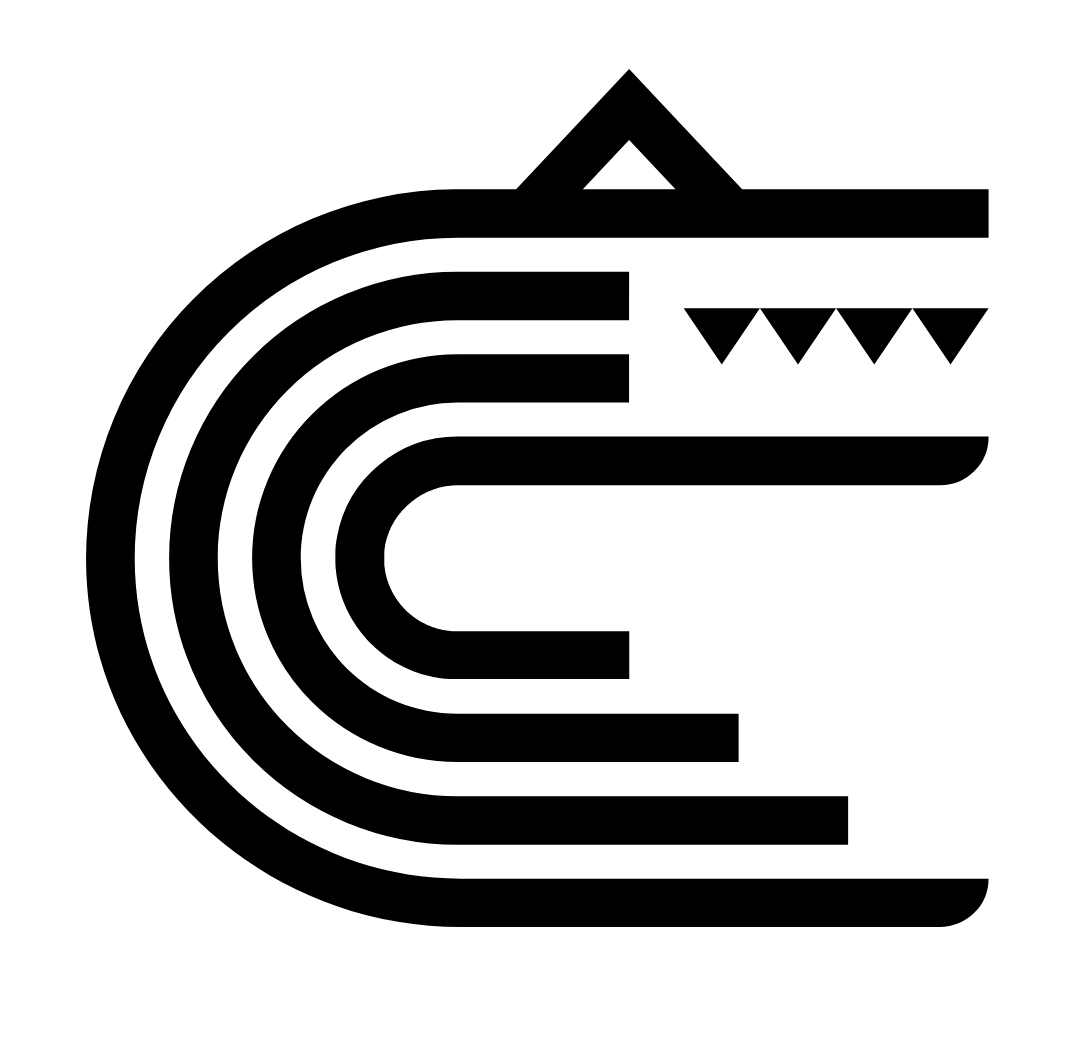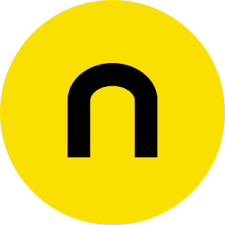Outdoor Signs External branding & wayfinding
Level up to landmark status with outdoor signage that's minimal-effort, maximum-impact. We kit your building out with entrance and exterior signs that are low maintenance yet high quality; crafted from robust, weather-defiant materials that retain condition and colour to give your office or shopfront long-lasting visibility. Whether you need kerbside branding or a public facing wayfinding system, our outdoor signs stand out and bring people in.
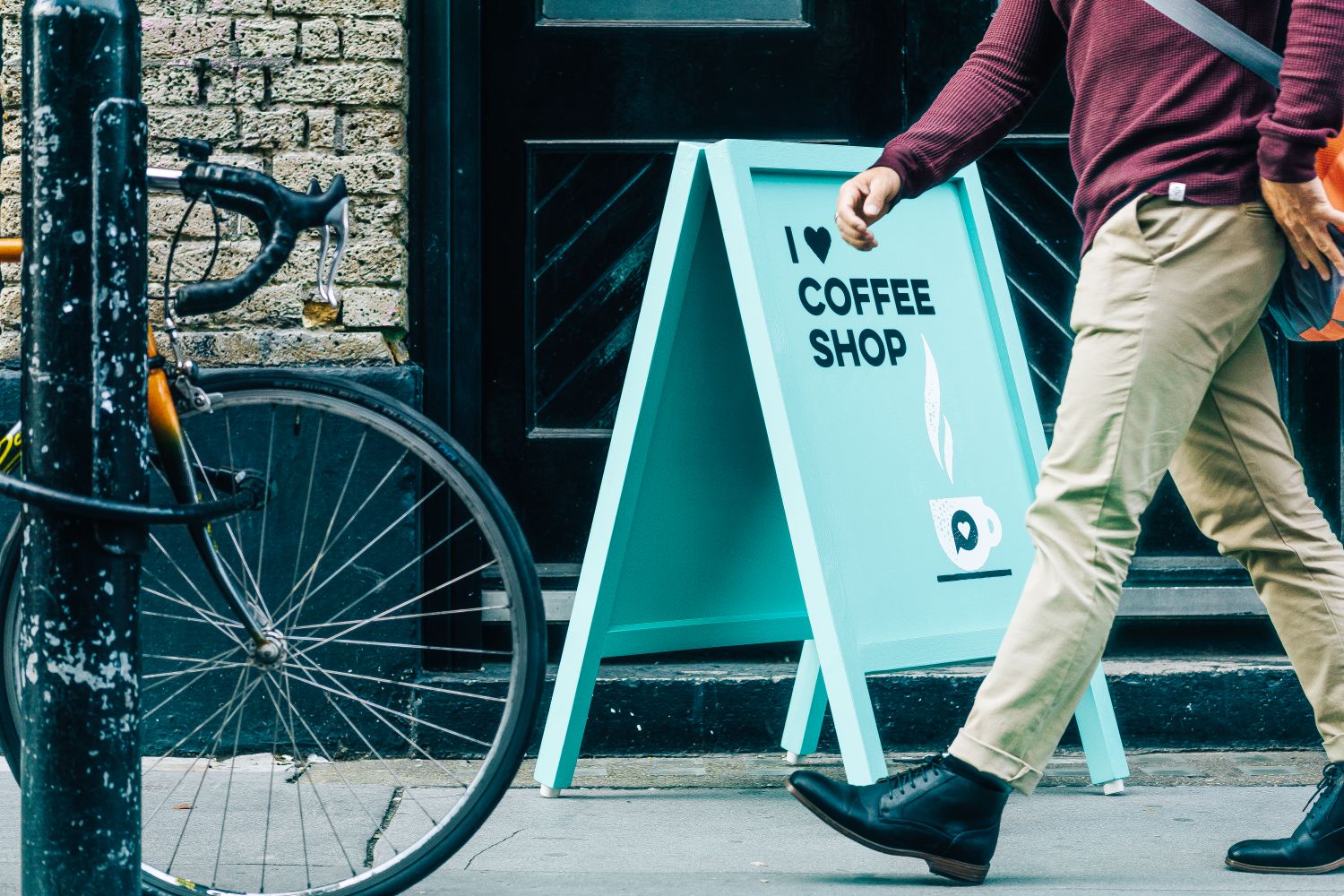

















Customise your outdoor space with signage that speaks your language. Made to your business' location and broadcast objectives, our branded signs cut through the hustle and bustle to let people know exactly who you are and what your message is. From wall signs to mounted solutions, we'll add to the external fabric of your architecture while using it as a canvas for communication, building an easily recognisable environmental identity that resonates with your audience.
Our lettering and logo signs are suitable for your entryway and exterior walls, and with options that include tray signs, 3D builds and illuminated signage, they are a surefire way to catch the eye in a concrete jungle. From small bits of signwriting to big murals, our hand painted signs are also a great way to grab attention.
With a modern, minimalist take on a traditional signposting technique, our projecting and hanging signs speak to the cityscape at sky level - available in wood, metal, glass or acrylic, and with or without backlighting.
Last but not least, pavement signs such as A boards and hoarding panels urbanise your branding - piquing the interest of passersby right from the road, manifesting your messaging in bespoke vinyl lettering or skilled signwriting.
Guide wandering eyes your way with an optimised navigation system and purpose-built external wayfinding signage. We’ll organise the best ways to walk around your premises if need be, and manifest them into signposted routes that are functional for your users - enhancing the experience of your outdoor area while efficiently guiding the flow of foot traffic.
Our welcome signs and wall signs are the first step in letting your visitors know they're in the right place, serving as both identification and directional guideposts to inform them of where they are and where they can go. While this type of signage is available in a range of materials, it's worth pointing out our hand painted offering as it is particularly popular; blending traditional craftsmanship with modern aesthetics to create a legible and visually appealing language.
Directories, plaques, panels and post-mounted signs extend the narrative of your outdoor space. Building on your initial welcome, they continue to guide, inform, and direct, ensuring guests experience a consistent and cohesive journey. They're also suitable for regulatory purposes and again, are available in a variety of material choices.























Outdoor Signs FAQS
Outdoor signage serves a multitude of purposes, each playing a crucial role in helping businesses communicate with their audience. Here are some of the key purposes of our signs:
Brand Visibility: one of the primary purposes of outdoor signage is to increase brand visibility. A well-designed, strategically placed sign can capture attention, making a business or location easy to spot, even from a distance.
Advertising & Promotion: outdoor signs are excellent tools for advertising products, services, or special promotions. They can be targeted yet reach a broad audience, encouraging potential customers to visit your store or website.
Direction & Navigation: Wayfinding signs help guide people through a physical environment and improve their understanding and experience of the space. This could be a directory at a coworking space, directional signs on a school campus, or a sign indicating parking at an office or restaurant.
Informational: Signs can provide critical information to the public. This could be operational hours of a business, rules and regulations of a park, or safety instructions at a construction site.
Identification: Outdoor signs often serve to identify a business or location. This can include the name of a building, the logo of a business on its exterior, or a sign indicating the type of business or product (such as "Zoo" or "Coffee").
Persuasion: Signs can also serve to influence behaviour, encouraging potential customers to consider purchases, promoting special offers, or informing of upcoming events.
Aesthetics: Lastly, outdoor signage can contribute to the overall theme of a space. This could range from a painted mural on the side of a building, to a thematic sign in a historic district, to a sleek, modern sign in front of a tech company.
In short, outdoor signage is a versatile and crucial component of public spaces and business marketing strategies, serving to inform, direct, promote, and enhance the visual landscape.
Outdoor signage comes in a broad array of styles and formats, each designed for different purposes and environments. Here are some of the most popular types of outdoor signage we do at Glyphics:
Logos & Letters: these are custom-made logos or letters commonly used in exterior signage, especially for business names and branding purposes. They are often raised, 3D or illuminated for high visibility, and found on entryways and walls. We also specialise in large-scale logos, lettering or graphics, creating a mural that can be directly painted or applied onto an exterior wall for a dramatic effect, often used for branding or aesthetic purposes.
Projecting & Hanging Signs: these wall mounted signs are placed overhead for long distance and multi-directional visibility. They are often used at the entrances of buildings to provide a strong visual presence, making them ideal for catching the attention of both pedestrian and vehicular traffic.
Pavement Signs: typically found in high-flow areas, these tend to be external business signs that integrate with your streetscape. They are either portable signs or temporary installations applied on custom-built structures or native surfaces, ranging from A frames, hoarding and vinyl wraps to banners, flags and boards - all of which are easily changeable too. They offer a cost-effective way to present promotions, advertisements or directional information to passing pedestrians and drivers.
Welcome & Wall Signs: these typically refer to the numbering, lettering or shapes on the outside of a building, and sometimes on a window, that help identify a space or navigate it. They include logo and lettering signs, usually in the context of a wayfinding system as opposed to solely for branding purposes. They can be applied directly to surface such as a hand painted 'enter' sign or built out of your choice of medium, like a channel cut arrow sign. The key is clean design and clear wording that complements your brand and the architectural context.
Directories & Plaques: these signs tend to come in the form of flat wall mounted, often rectangular plates - though they can be made in any shape or size - and they serve to display the names and locations of businesses, departments, offices, or individuals located within a building or complex. Directories are usually placed outside at the entrance of a multi-space site, providing a list of tenants that can be found there alongside directional information such as arrows, maps, or floor numbers to help guide visitors to their desired location, while plaques are a type of identification signage that convey business information such as room name at the location itself, helping people to orient themselves. As well as being a critical component of wayfinding systems, they can also be used for decorative or commemorative purposes. Whether you're looking for a directory or plaque or both, we’ve got a large range of material options including stainless steel, brass, copper, bronze, acrylic to name some, with each bringing its own unique character to your wall. Depending on the material used and the level of detail needed in the design, they can be engraved, etched, cast, or printed upon, and are typically designed to be durable and weather-resistant if used outdoors.
Panels & Post-Mounted Signs: Panels are flat signs available in different sizes, weights and depths. They can be made from a variety of materials, including metal, acrylic, wood, or a composite material like dibond. A panel can be single-sided (for viewing from one direction) such as when wall mounted, or double-sided (for viewing from two directions), useful in the case of pole-mounting. Supported by one or two posts, pole-mounted signs can be put into most surfaces, though our installation team will assess the location and recommend the right method. These signs are particularly visible from a distance as they appear freestanding and can be propped up high to be seen over obstacles like trees.
The type of outdoor signage that's best for your needs will depend on your specific goals, location, and budget. If you have something in mind that you don't see on this list, it's more than possible we still offer it, just give us a ring to discuss.
Absolutely. We specialise in producing and providing large-scale outdoor signs suitable for a variety of settings. Our key offerings include hand-painted signs, hollow tray signs, and both 3D and flat cut lettering or graphics. These are designed to be lightweight yet durable, to facilitate easy installation and long-term resilience against various weather conditions.
However, it's essential to note that the installation process may require specific considerations. The accessibility and reachability of the intended installation space play crucial roles. Additionally, depending on the size and location of the sign, you may need to secure planning permission or coordinate temporary closures of adjacent areas, such as pavements or roads.
In this regard, we can assist by providing detailed drawings of the sign to aid you in obtaining any necessary permissions. If the sign is particularly heavy or protrusive, consulting with a structural engineer might be required to ensure the intended structure can adequately support the load. Our team's goal is to ensure that your large-scale signage needs are met with the highest standards of safety and quality, so it's best to give us a ring to chat about what you have in mind..
Weatherproofing outdoor signs is crucial for maintaining their appearance and prolonging their lifespan. These are some of the steps we take in the process of making your signs, and there are some tips for upkeep that you might want to consider too:
Choice of Material: start with a material that's naturally durable and weather-resistant. This could be aluminium, acrylic, dibond, or treated wood to name a few. The right choice depends on your local climate and the specific conditions the sign will face.
Use of Weather-Resistant Paints/Inks: if your sign will be painted or printed on, we'll ensure the use of UV-resistant and waterproof inks or paints. These are designed to resist fading from sun exposure and can withstand rain, snow, and other elements.
Apply Protective Coating: protective coatings such as clear laminates or sealants can be applied to the sign’s surface after the design has been printed or painted. This will provide an additional layer of protection against UV rays, moisture, dirt, and damage.
Proper Mounting: we'll guide you to help ensure that your sign is mounted properly. If water can get behind your sign, it can damage the sign and the wall it's mounted to. In windy areas, it's important to make sure your sign is securely fastened to prevent it from getting blown away or damaged.
Regular Maintenance: regular cleaning and maintenance can help your sign last longer. This includes cleaning off dirt and grime, checking for any damages, and repairing minor issues before they become major problems. We usually suggest cleaning with just water and if need be a mild soap to avoid chemical damage.
Consider Overhead Protection: if possible, consider placing your sign in a location where it will be somewhat shielded from the elements, such as under an awning or overhang.
All signs will eventually face wear and tear over time and may need to be replaced. At Glyphics, we use weatherproofing techniques and high-quality materials at the base line to help increase the lifespan of your sign.
Choosing the appropriate material for an outdoor sign is crucial and depends on several factors, such as the sign's intended use, aesthetic appeal, location, and your budget. At Glyphics, we offer a wide variety of materials, each with its unique advantages:
Aluminium: This material is a popular choice for outdoor signs due to its durability and resistance to rust and corrosion. It's also lightweight, making it easier to install and handle. Aluminium is versatile and can be used for logos, letters, projecting signs, pavement signs, welcome and wall signs, directories, plaques, panels, and post-mounted signs.
Dibond: A composite material consisting of two aluminium sheets with a solid polyethylene core, Dibond is known for its strength, stability, and lightweight characteristics. It's weather-resistant and excellent for high-quality printing. This material is ideal for projecting signs, welcome and wall signs, panels, and post-mounted signs.
Acrylic: Offering a sleek, modern look, acrylic is suitable for various applications. It's resistant to weather and UV light, ensuring your sign remains vibrant for a longer duration. However, being prone to scratches, it's best for areas with less potential for physical impact. Acrylic is ideal for logos, lettering, welcome and wall signs, directories, and plaques.
Hand Painted: These signs provide a unique, artisanal touch, making a statement while exuding warmth. They stand apart from mass-produced signage and can be designed in your brand's style and colour scheme using weather-resistant paints. Hand painted signs are most suitable for logos, lettering, welcome and wall signs.
Vinyl: In our experience vinyl is most often used for banners or temporary signage and it's suitable for wraparound decals too, like our work for the City of London. It is flexible, durable, and displays bright, vibrant colours. It's also weather-resistant and cost-effective, making it apt for logos, lettering, welcome and wall signs.
Wood: Offering a classic, rustic aesthetic, wood is durable when properly sealed and maintained. However, it's not the best choice for extremely wet environments as it can warp over time. Wood is suitable for projecting signs, pavement signs, directories, and plaques.
Brass and Stainless Steel: Known for their durability and aesthetic appeal, these materials are excellent for plaques, logos, and lettering, offering a sophisticated and premium look.
Glass: An excellent choice for wayfinding and plaques, especially popular for chamber signs. It offers a clean, modern, and elegant look.
The most suitable material for your sign will depend largely on its specific purpose, desired aesthetic, location, and budget. Feel free to contact us, and we'll be happy to recommend the most suitable material based on your unique needs.
The creation and installation timeline for your signs will depend on the complexity of the design, the approval process and the mutual schedules of all parties involved. It's best to contact us directly for an accurate estimate.
All of our signs are bespoke and made from scratch just for you. We wholeheartedly support and encourage the customisation of designs to help you create a unique representation of your brand or message. Here's how you can start the process:
Initial Concept: Begin by sending us your initial design ideas. This could include any drawings, digital designs, or a simple description of what you envision for your sign.
Consultation: Our team will review your design, assessing its feasibility considering factors such as material suitability, fabrication techniques, and installation considerations.
Recommendations: If there are aspects of your design that aren't feasible, don't worry - we will propose adjustments or alternative solutions to help bring your idea to life, while maintaining the design's core elements.
So, feel free to share your design ideas with us. We're excited to collaborate with you and create a sign that aligns with your vision.
Yes. We're here to guide you every step of the way, even if you're starting from scratch. Whatever message you'd like your sign to communicate, we'll collaborate with you to devise an optimal solution. Our team will consider the sign's intended environment and purpose to develop a design that's both aesthetically appealing and effective in its function.
Whether you're looking for internal or external signage, we offer a comprehensive design service including the creation of wayfinding systems - enquire with us and we'll provide you a quote to kick things off. On-site estimators and in-house designers work together to craft intuitive, easy-to-follow designs that smoothly guide users through your spaces.
Once the cost of the initial design phase is settled and ownership of the final drawings is transferred to you, you're free to use them in any way you see fit and we can move forward with the production and installation of your signage as usual.
For more information about wayfinding check out our dedicated page.
Absolutely, illuminating your outdoor sign can greatly enhance its visibility, especially during evening hours. However, there are a few critical points to consider:
Council Approval: Illuminated signs often require permission or clearance from the local council. These regulations vary by location, so we recommend checking with your local authority early on in the process.
Electrical Installation: Illuminated signs require electrical connectivity, which needs to be handled by a qualified electrician. We highly recommend engaging with an electrician early in the planning process to understand potential installation requirements and costs.
As such, before commissioning an illuminated outdoor sign, we strongly suggest consulting with both an electrician and your local council. This proactive approach will help ensure a smooth installation process and compliance with all necessary regulations. Our team is also here to support you in navigating these considerations.
It depends on the sign but overall yes you can, having a sign with interchangeable messages offers flexibility and adaptability, and is especially relevant for A-boards or directories. This capability can be incorporated into the sign design in various ways, allowing for easy updates to the displayed information.
When planning your sign, please inform us if you anticipate the need for regular message changes. This will allow us to design your sign accordingly and provide you with an accurate quote that includes the cost of future updates.
By understanding your needs upfront, we can ensure your sign is not only aesthetically pleasing, but also versatile and functional, catering to your changing messaging needs over time.
The working standards for outdoor signs involve a range of factors that you'll need to consider, ensuring your sign is installed properly and safely:
Sign Type and Installation Location: Initially, we'll discuss the nature of the signage you're looking for and the intended installation location. As experts in sign installation, we have a deep understanding of how different manufacturing materials and locations can impact the lifespan of your signs and the methods of their installation.
Project Management and Site Audit: After initial discussions, a dedicated project manager will be assigned to your project. This individual will conduct a thorough site audit to evaluate your space and ensure its structural integrity. Their aim is to effectively implement your sign ideas while also assessing and managing any potential risks.
Assembly of Expert Team: Once the site audit is complete, we will assemble a team of suitably qualified professionals to work on your signage project. This guarantees that every aspect of your sign—from design and manufacturing to installation—is handled by skilled experts. For more details, please refer to our installation page.
Access Equipment Considerations: Depending on the height and location of your sign, access equipment like a scissor lift, cherry picker, or scaffolding might be required. It's crucial to verify with your local authority if the use of such equipment is allowed, as different councils have varying restrictions.
Consultation with Local Council and Building Owner: Lastly, it's essential to consult with your local council and the building owner before commissioning the sign. Regulations around signage can vary greatly between different councils, and building owners may have their own specific guidelines or restrictions.
By adhering to these considerations and processes together, we'll ensure your outdoor signage is installed in a manner that prioritises safety, efficiency, and compliance with all necessary regulations.

